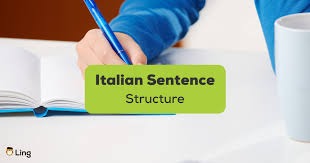Learning Italian can be an exciting journey, especially when you start understanding how its sentences work. Italian sentence structure follows certain logical rules that can seem tricky at first, but with a little patience and practice, they become easier to follow. In this guide, we will explore the basics of how Italian sentences are built and how you can begin analyzing them like a native speaker.
Understanding the Basic Structure
Italian, like English, follows a Subject-Verb-Object (SVO) structure in most cases. However, the language is flexible and allows for variations depending on what is being emphasized. This flexibility can confuse beginners, but understanding the purpose behind these changes will help you build correct and expressive sentences.
Example of Basic and Flexible Word Order
For example, instead of saying “Luca mangia la mela” (Luca eats the apple), someone might say “La mela la mangia Luca” to emphasize who is eating the apple.
Identifying the Subject in a Sentence
One of the first things to recognize in any sentence is the subject, which tells us who or what is performing the action. In Italian, the subject is not always written, especially when it is clear from the verb. This is because Italian verbs change depending on the subject.
Example of Subject Implied in Verb
So, if someone says “Mangio una pizza,” it means “I eat a pizza,” even though “I” is not mentioned. The verb ending “-o” tells us the subject is the first person singular.
The Predicate and Its Complements
Next, let’s talk about the predicate, which is the part of the sentence that contains the verb and says something about the subject. In Italian, verbs are often accompanied by objects or complements that give more information. These could be direct objects, indirect objects, or other types of complements.
Example with Direct and Indirect Objects
For instance, in the sentence “Maria scrive una lettera al professore,” “una lettera” is the direct object, and “al professore” is the indirect object.
The Importance of Complements
Complements add a lot of meaning to sentences. They can tell us to whom something is done, where, when, why, or how something happens. Understanding how to identify these elements can make a big difference in how you understand and construct sentences. This is where tools like Analisi Logica can help you analyze each part of a sentence step by step.
Building Sentences Gradually
Many learners find it helpful to start with simple sentences and slowly add complements to see how they change the structure.
Step-by-Step Example
For example, starting with “Giulia legge,” you can add a direct object to form “Giulia legge un libro,” and then add a time expression to make “Giulia legge un libro ogni sera.” This approach helps you build a deeper understanding of how each element fits into the sentence.
Prepositions in Italian Sentence Structure
Prepositions are also essential in Italian sentences. They often introduce complements and are necessary for making the sentence grammatically correct. For example, “con,” “a,” “da,” and “per” are commonly used.
Example with Preposition
In “Parlo con Marco,” the word “con” introduces the complement that tells us who the speaker is talking with. These small words carry big meaning and should not be overlooked.
Flexible Word Order and Emphasis
Word order in Italian is more flexible than in English, which means emphasis can be placed on different parts of the sentence by changing the order. This flexibility allows for expressive and natural communication, but it also requires a solid understanding of each element’s role. With enough practice, you’ll learn how to shift sentence elements without changing the core meaning.
The Use of Pronouns
One common challenge for beginners is dealing with pronouns, especially when they are used before the verb. For instance, “Lo vedo” means “I see him/it,” where “lo” replaces a masculine singular object. These pronouns can sometimes seem invisible or confusing, but they are essential for sounding natural in Italian.
Practice and Tools to Improve
If you’re serious about mastering sentence structure, it’s a good idea to practice daily. Reading Italian texts, writing your own sentences, and using a tool like Analisi Logica can accelerate your learning. This tool breaks down the sentence and shows the function of each word, which is especially useful when dealing with complex phrases.
Conclusion
Understanding Italian sentence structure is about recognizing the role each word plays in communication. Subjects, verbs, objects, and complements all work together to create clear and meaningful sentences. With consistent practice and the right tools, you’ll find that analyzing and building Italian sentences becomes second nature. Keep learning, stay curious, and enjoy the process of mastering the beautiful Italian language.
